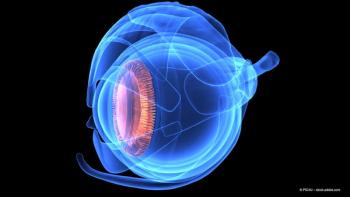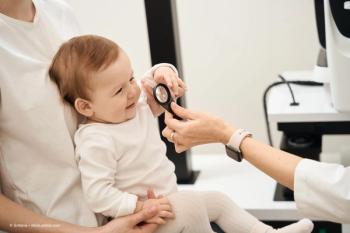
Study examines the influence of the cellular environment on vision
Researchers noted a study by Ruhr-University Bochum researchers provides crucial evidence that the ECM influences visual sensory motor behavior already at the retina level, without intervention of disease and/or experimental manipulation.
A team of researchers has examined the 4 extracellular matrix proteins Brevican, Neurocan, Tenascin-C and Tenascin-R, which occur in the cell environment of nerve cells of the retina.1
“Their precise role in the retina has not yet been sufficiently investigated,” Jacqueline Reinhard-Recht said in a Ruhr-University Bochum news release.
According to the news release,2 as a result the researchers then examined the visual function of so-called knockout mice, which were genetically modified in such a way that their bodies could not produce the four mentioned proteins.
Through electroretinogram analyses, the researchers were able to show that rod photoreceptors and bipolar cells in the knockout mice exhibit functional deficits in visual processing.1
“Interestingly, we were also able to find significant limitations in visual movement processing in the knockout mice compared to control animals,” Reinhard-Recht said in the news release.
The researchers noted in the release that mice lacking just the proteins tenascin-C or tenascin-R also display losses in visual motion processing, but much weaker.
“This shows that the cumulative loss of four matrix proteins reinforces optomotor limitations,” Reinhard-Recht said.
Matrix remodeling and imbalance in synaptic signaling
Studies on the retina of knockout mice also revealed changes in various matrix molecules and synapses.
“In particular, there was an imbalance of inhibitory and excitatory synapses,” Reinhard-Recht pointed out. “Overall, the research data indicate that the four matrix proteins Brevican, Neurocan, Tenascin-C and Tenascin-R are important modulators of synaptic signaling in the retina.”
Moreover, Reinhard-Recht said the research data contribute to a much better understanding of the complex molecular mechanisms of visual processing.
The researchers also noted study provides crucial evidence that the ECM influences visual sensory motor behavior already at the retina level, without intervention of disease and/or experimental manipulation.1
“In the future, these findings could offer new approaches for the development of therapeutic interventions for visual function disorder,” she concluded.
Cooperation partners
According to the news release, as part of the research work, Reinhard-Recht, Cornelius Mueller-Buehl, Susanne Wiemann, Lars Roll, Veronika Luft and Andreas Faissner from the Department of Cell Morphology and Molecular Neurobiology, Faculty of Biology and Biotechnology at Ruhr University Bochum cooperated with Professor Stephanie Joachim from the Experimental Eye Research Institute of the University Eye Clinic in Bochum, Hamed Shabani and Daniel Rathbun from the Institute for Ophthalmic Research, Centre for Ophthalmology, Eberhard-Karls-University in Tübingen as well as Lin Gan, Chao-Chung Kuo and Julia Franzen from the Interdisciplinary Centre for Clinical Research Aachen, RWTH Aachen.1
References
Jacqueline Reinhard, Cornelius Mueller-Buehl, Susanne Wiemann, Julia Franzen, Stephanie Joachim, Adreas Faissner; Neural extracellular matrix regulates visual sensory motor integration. iScience. Published January 8, 2024. Accessed February 7, 2024. Issue 2, Volume 27. DOI:
https://doi.org/10.1016/j.isci.2024.108846 The influence of the cellular environment on vision. EurekAlert! Accessed February 7, 2024. https://www.eurekalert.org/news-releases/1033377
Newsletter
Keep your retina practice on the forefront—subscribe for expert analysis and emerging trends in retinal disease management.















































